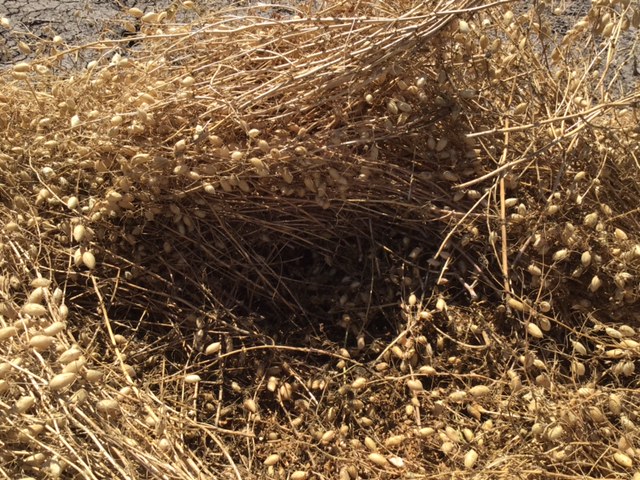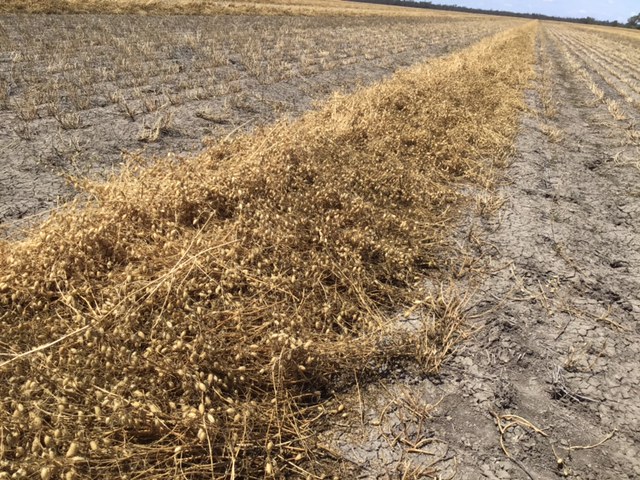Our pulse cropping industry is constantly looking at ways to produce a quality product for our export market.
The Australian mungbean industry is consistently looking at various agronomic techniques to improve our mungbean crops.
Chickpeas have a slightly less discerning export market; however, grain loss and quality are still worthy of investigation among some unusual harvest techniques.
I have included photos of some swathed chickpeas, and this year is no exception, with some farmers and their agronomists looking at swathing to reduce paddock losses or improve quality.
Much of our chickpea crop is chemically desiccated, and with that practice, you need to abide by any withholding periods, usually at seven days, as stated on the applied registered herbicide label.
This was a major positive action many decades ago by applying registered herbicides like glyphosate to a slowly maturing chickpea crop.
More and more these days, the quality of chickpeas is getting more attention, as is loss reduction during the withholding period and the harvester action.
Some measurements have been done over the years with this swathing practice in chickpeas, and certainly, this much-reduced timeline of zero withholding period can certainly help reduce our grain loss out the back of the header or just pre-harvest shattering.
By swathing, I mean that a specialist machine cuts the chickpea bush low to the ground and puts that cut dry matter into a windrow for pickup by a specialized header front.
Our reduced export price for chickpeas has certainly dented the profitability of our great early crop yields.
It is unfortunate that our major export customer for our highly regarded desi chickpea crop has imported large tonnages of field peas from other countries that had a good season too.
Supply and demand strike again to heavily reduce the value of our valuable pulse crop called chickpeas.
One question I would like answered is: will swathing reduce harvester fires in the chickpea paddock? Chickpeas are notorious for being very dry and have a relatively low flash point around a big hot machine like a header at this time of year.
Certainly, if the swath is left on the ground for extra days, then it will dry out much more and possibly become more incendiary.
Would an early pickup after swathing be a good idea for these fire reduction concerns?
However, I believe that a significant positive would be a reduction in valuable grain being left in the paddock.
So, questions without definitive answers so far; however, perhaps by the end of our current winter pulse crop season, there will be some valid information we can use in the future about swathing and grain loss reduction.








